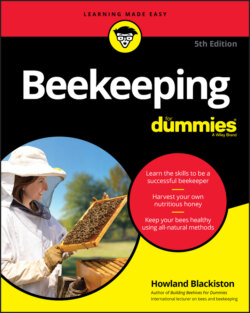Читать книгу Beekeeping For Dummies - Howland Blackiston - Страница 43
Head
ОглавлениеThe honey bee’s head is flat and somewhat triangular in shape. Here’s where you find the bee’s brain and primary sensory organs (sight, feel, taste, and smell). It’s also where you find important glands that produce royal jelly and some of the various chemical pheromones used for communication. Figure 2-2 compares the heads of a worker, drone, and queen.
Courtesy of Howland Blackiston
FIGURE 2-2: Comparing the heads of worker, drone, and queen bees. Note the worker bee’s extra-long proboscis and the drone’s huge, wraparound eyes.
Royal jelly is a substance secreted from glands in a worker bee’s head and is used as a food to feed brood.
The important parts of the bee’s head are its
Eyes: The head includes two large, compound eyes that are used for general-distance sight, and three small, simple eyes, called ocelli, which are used in the poor light conditions within the hive. Notice the three simple eyes (ocelli) on all three bee types Figure 2-2, while the huge, wraparound, compound eyes of the drone make him easy to identify. The queen’s eyes, are slightly smaller than the worker bee’s and much smaller than the drone’s.
Antennae: The honey bee has two elbowed antennae on the front of its face. Each antenna has thousands of tiny sensors that detect smell (like a nose does). The bee uses this sense of smell to identify flowers, water, the colony, and maybe even you! The antennae also, like the branched hairs mentioned earlier, feel, detect moisture, measure distance when bees fly, and help the bee detect up and down, among other functions.
Mouth parts: The bees’ mandibles (jaws) are used for feeding larvae, collecting pollen, manipulating wax, and carrying things.
Proboscis: Everyone’s familiar with those noisemakers that show up at birthday and New Year’s Eve parties. You know, the ones that unroll when you toot them! The bee’s proboscis is much like those party favors, only without the “toot.” When the bee is at rest, this organ is retracted and not visible. But when the bee is feeding or drinking, it unfolds and two basic parts to form a long tube that the bee uses like a straw.
